Campfire Moon Rover HiFi IEMs – Brilliant Flame Reveals Otherworldly Music
Campfire Moon Rover is a $1199 USD pair of IEMs designed around a Full-range Planar Magnetic Driver, with a unique finish for each pair out there, hand-crafted shells and gold-plated screws. Today we will take a deep dive in the world revealed by the flame of the Moon Rover and compare them with other similarly priced flagship IEMS, including Soundz Flame (1101 USD), Spirit Torino Twin Pulse Beryllium (999 USD), Sennheiser IE900 (1499 USD), Sweear HE-Live5 (899 USD), and Campfire’s own Bonneville IEMS (1399 USD).
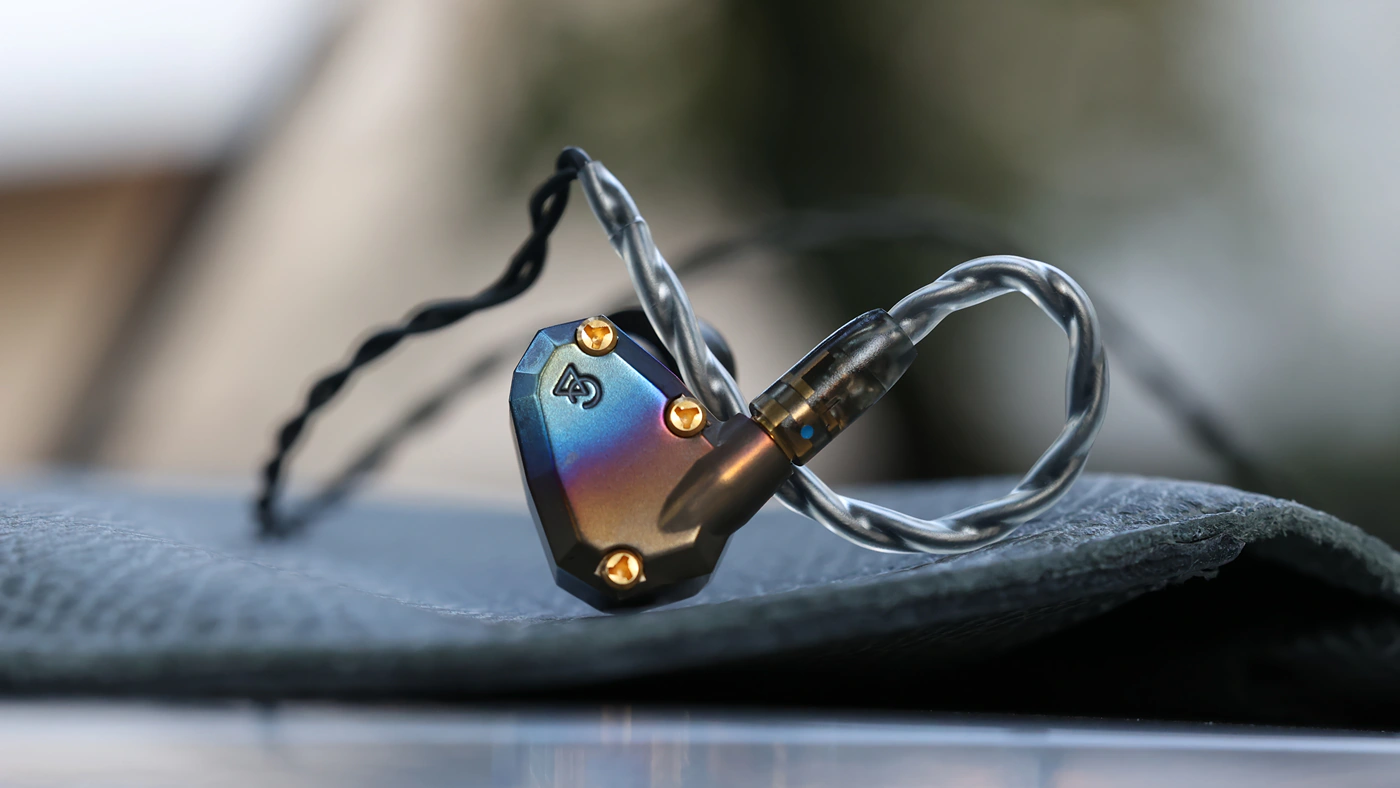
Introduction
Campfire Audio is one of the world’s leading IEM designers, and thanks to the excellent sound of their products and stellar support, they make some of the best selling IEMS as well. The Moon Rover we have in for review today is going to be the first model with a unique finish for each individual IEM that they made, and today we’re going to explore just how they compare to the market and how Campfire set to redefine once again what we can expect from the high-end sector of this hobby. As an Amazon Influencer, I earn from qualifying purchases, and using the purchase links in my reviews helps me maintain this website and Youtube Channel. Huge thanks to Campfire Audio for providing us with the sample for this review.
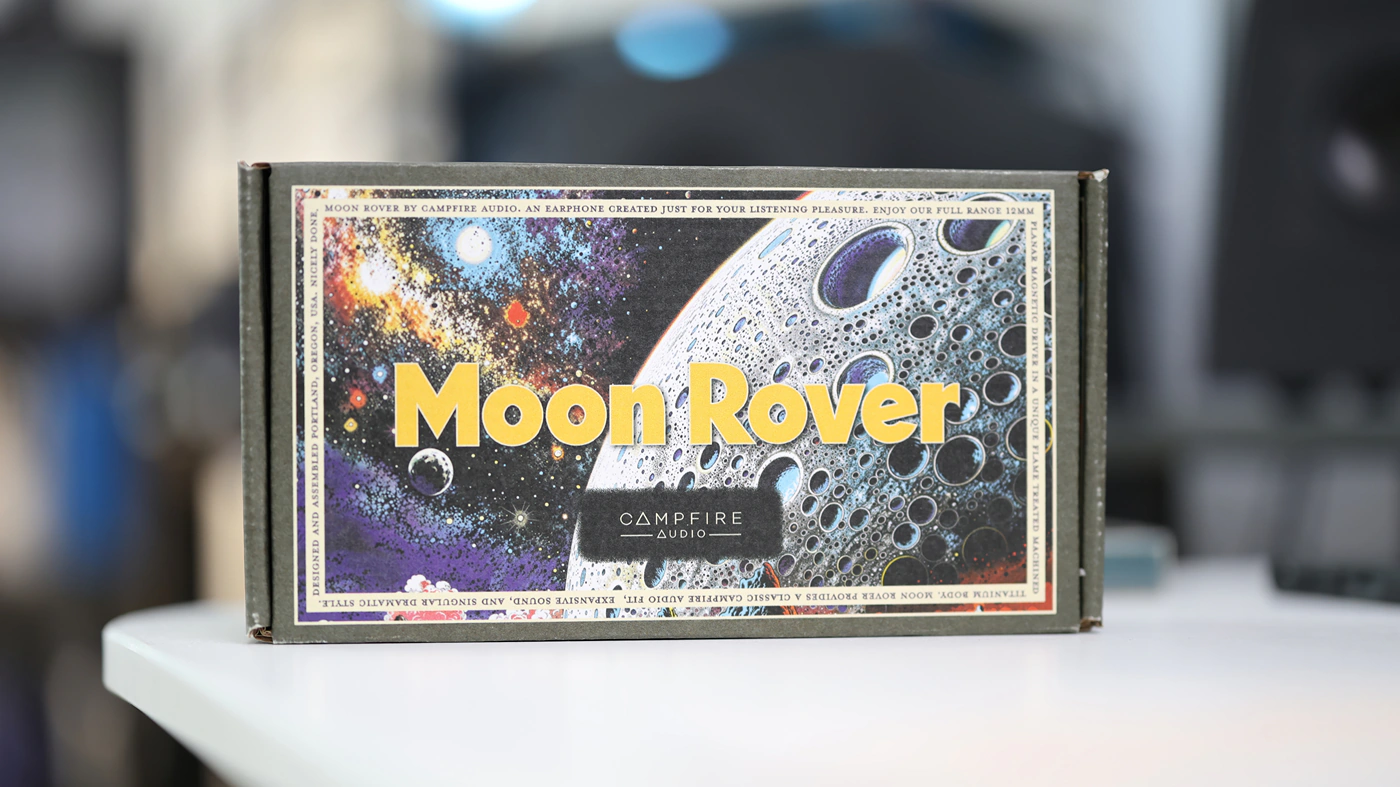
PROs – Universal Tuning and Signature that is highly transparent and works well with all music styles, excellent resolution and clarity, with strong detail revealing ability. Very good comfort, with a medium-deep fitting. The sound is exceptionally fun and dynamic, and has a strong body, but also excellent treble extension and clarity.
Cons – Default cable is only 3.5mm Single Ended, Not a lot of Passive Noise Isolation.
Product Link
Amazon – https://amzn.to/3YGiXuS
Build Quality/Aesthetics/Fit/Comfort
Campfire Moon rover is a Limited Edition Custom Made Universal IEM, and the flame-treated Titanium shells are not only very pricey to manufacture and process, but also extremely sturdy, and are individually treated with the flame to get to the color we see in today’s photos. Moon rover is a limited run IEM, with a total run of 888 units, and it features a 12mm planar magnetic driver, promising a cohesive, well-rounded signature offering a wonderful texture and resolution.
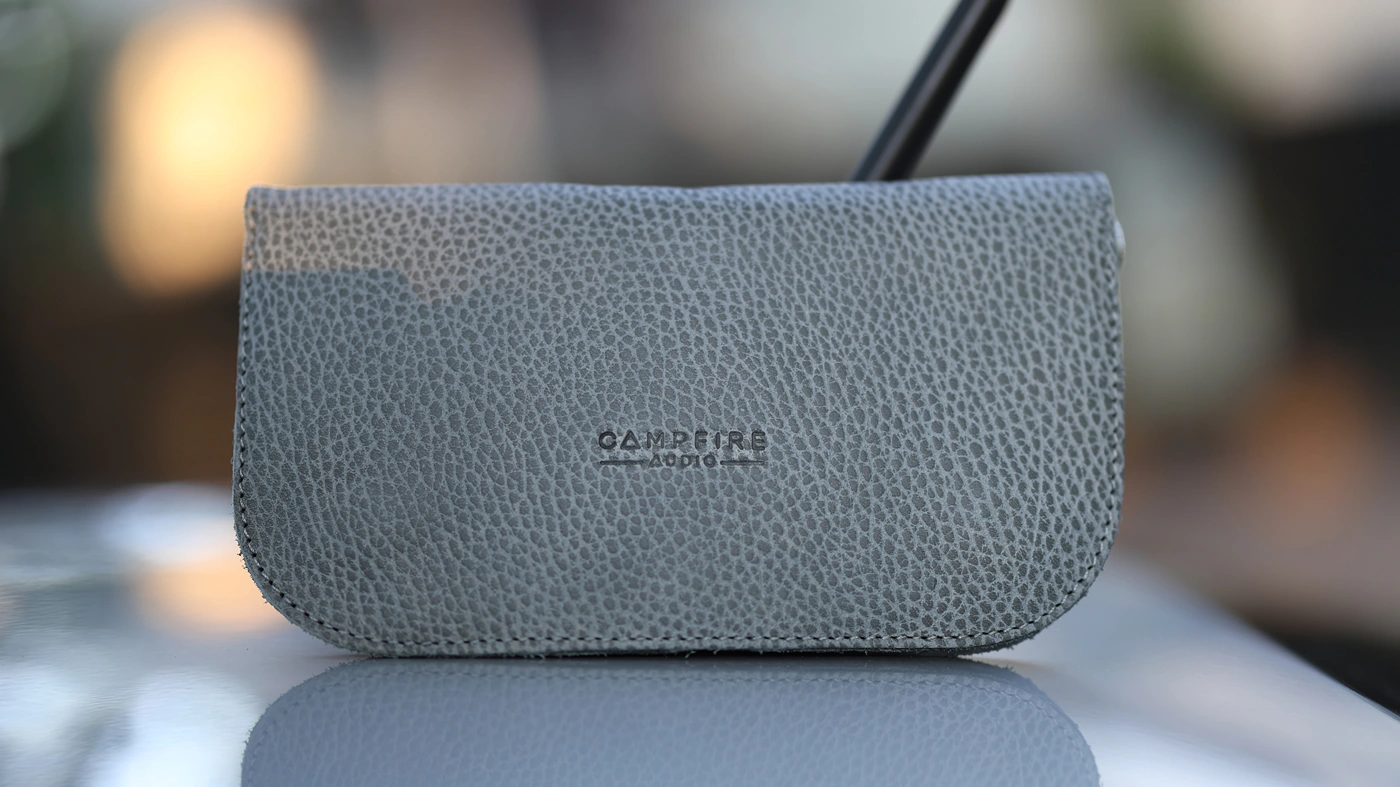
As each housing is flame treated by hand, each will have a subtle range of color that is revealed differently as they reflect the light both indoors and outdoors. Combining the planar drivers inside, with the geometric shape Campfire is known for, and titanium for the materials, Moon rover travels from Campfire’s past to the present and the future.
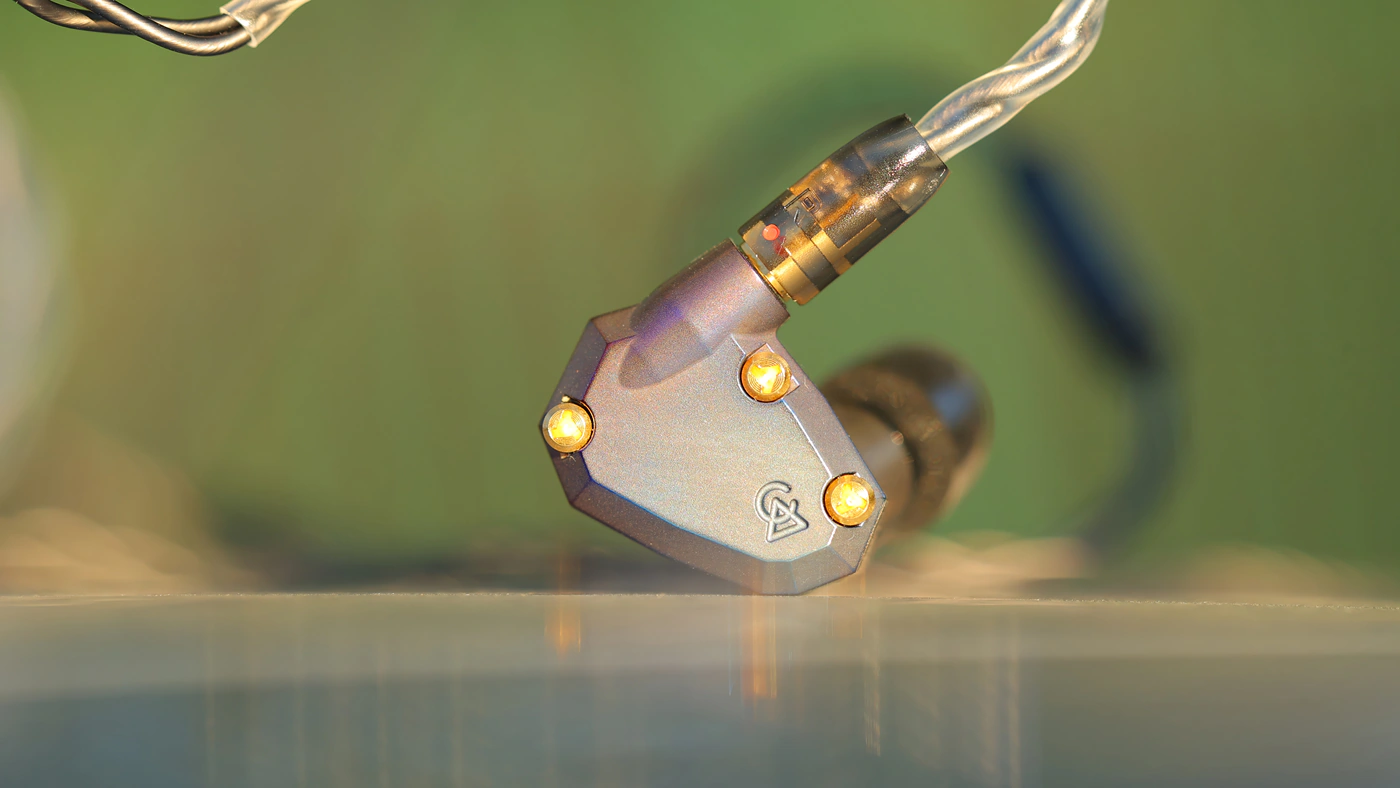
The Spout or Bore that goes inside of your ears is a Black PVD assembly that has a more natural comfort and fitting with human ears. There are also Gold Plated Tri Lobe Screws, and the default version of Moon Rover comes with the Super Smoky Litz cable, with eight, silver-plated copper conductors, for a thicker wire gauge for a better sound than the previous variants. The transport case is handmade and it is made of leather, being wax treated, and comes in the pebbled gray color we can see in the photos. There’s also a cleaning tool, and a micro two-pocket mesh to keep each IEM separate and avoid scratches.

The technical specifications show a SPL of 94 dB, which I can confirm as you need more power to drive the Moon Rover than most IEMs, and while the impedance is 22.5 OHMs, they are far less sensitive to source noise and hissing than any other Campfire IEM released to date, and just in general, Moon Rover is not sensitive to source noise at all. Moon rover has less than 1% Total Harmonic Distortion, but I feel like Campfire is just not a company to boast about numbers, because even IEMs that can promise measurements much better do not offer a lower THD.
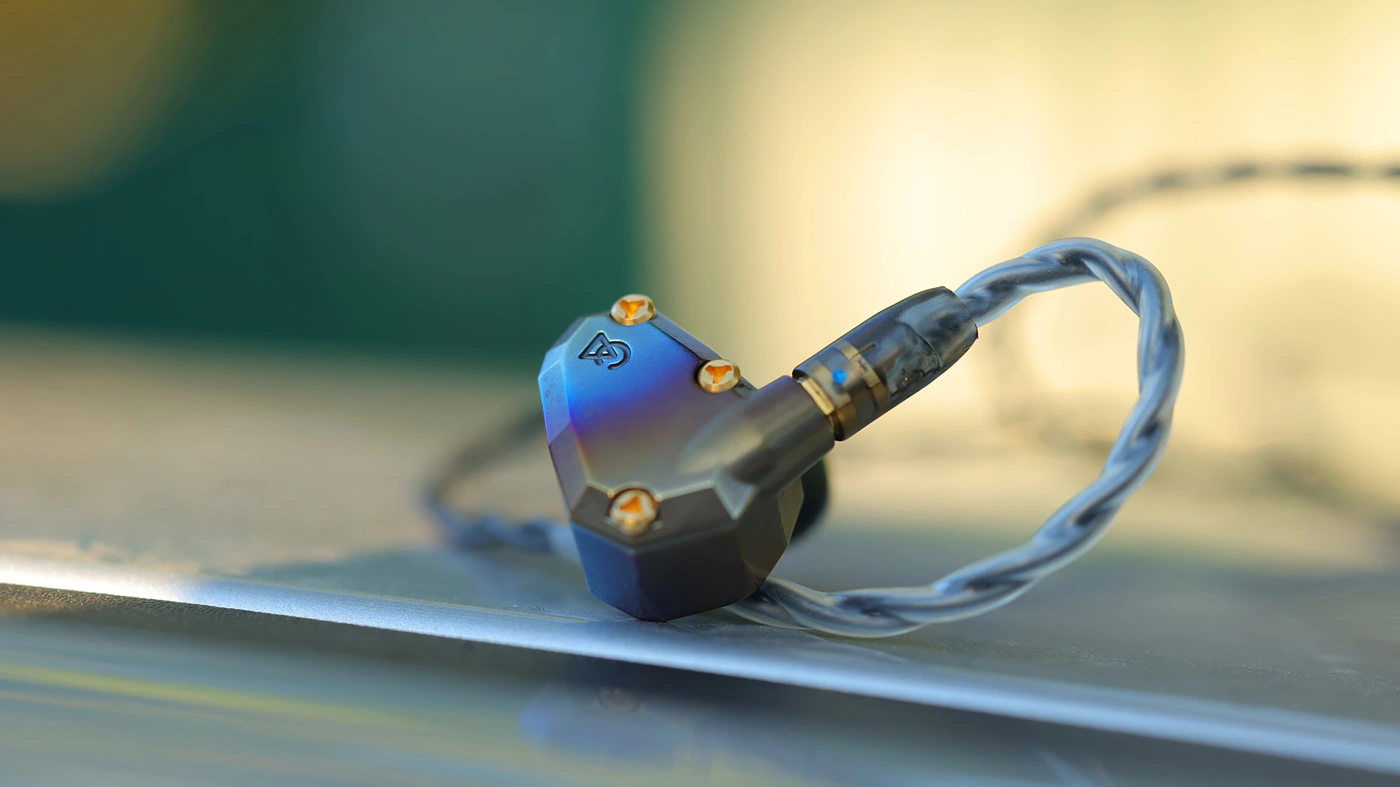
Same can be said about the Frequency response, Moon Rover has a technical Frequency Response of 5 Hz – 20 kHz, but in reality, they have one of the most extended, airiest and highest resolution treble I have ever heard. If you purchase the Moon rover until October 14 2024, you will also receive a free Time Stream 4.4mm Cable and a Pilot II 4.4mm Balanced Portable DAC. You have to add each to the shopping card on the Campfire Website, and they will be discounted at the checkout.
Fit / Comfort
As soon as you place the Moon rover inside your ears, you will hear a lower background noise and feel your ears embraced by the Moon Rover, as it has a strongly ergonomic and fun fitting, although it goes deeper inside of my ears than the average of IEMs. The medium-deep fitting requires the ddHiFi ST-35 Tips I typically use, and it works better than the foam tips included in the package, but the foam tips included in the package will offer a much stronger passive noise isolation.

The overall wearing is excellent, Moon rover is a very solid IEM with a beautiful design, it is never heavy and never fatiguing to wear and style, plus it has a beautiful faceplate that brings a smile to my face every time I see it. Seems I like the way Titanium burned by flame looks like, although this is the first time I see an IEM sporting such an intricate outer shell. The passive noise isolation being a bit lower, I tend to punch the sound a bit higher, but this is my listening habit in general.

The original cable is excellent at canceling microphonic and handling noise, but when inserting the Moon Rover inside your ears, you will notice that it has no driver flex, but it can have a very slight amount of void, as the internal pressure is equalized relative to the outer pressure, so don’t be too fast to protect your eardrums. There is no visible ventilation on the outer shell of the Moon Rover, but the pressure does equalize a couple of seconds after being inserted inside of my ears. After confirming this with multiple IEM designers and driver manufacturers, driver flex and void is entirely a subjective comfort preference and will never damage an IEM or a driver.
Sound Quality
Pairings – To get the best image of how the Campfire Moon Rover sounds like, I have paired it with a multitude of sources, including Dethonray Listening M1 powered by Keces P14 Linear Power Supply (Currently plugged in), HIFIMAN EF499, Singxer SA-1 V2, paired with a SMSL DO200 PRO DAC, iBasso D16 + iBasso PB5 Combo, iBasso DX180 Music Player, Hiby R6 PRO II Music Player, and DAC/AMPs like Shanling UA6. Moon Rover reacts very well to multiple sources, it is not sensitive to source noise and does not show hissing with all the sources and setups tested. It scales heavily with a detailed, high-resolution source. I recommend investing in the best source you can afford, my favorite overall pairing considering its sound is with Dethonray Listening M1 powered by Keces P14 LPS. For this review, I have used aftermarket cables, a combination of either Eletech Azrael or ddHiFi Nyx Pro, both of which are fairly transparent, but I did this not to influence the sound, but to get access to the balanced output of the sources mentioned above, as most of the DAc/AMPs sound much better if using the balanced output.
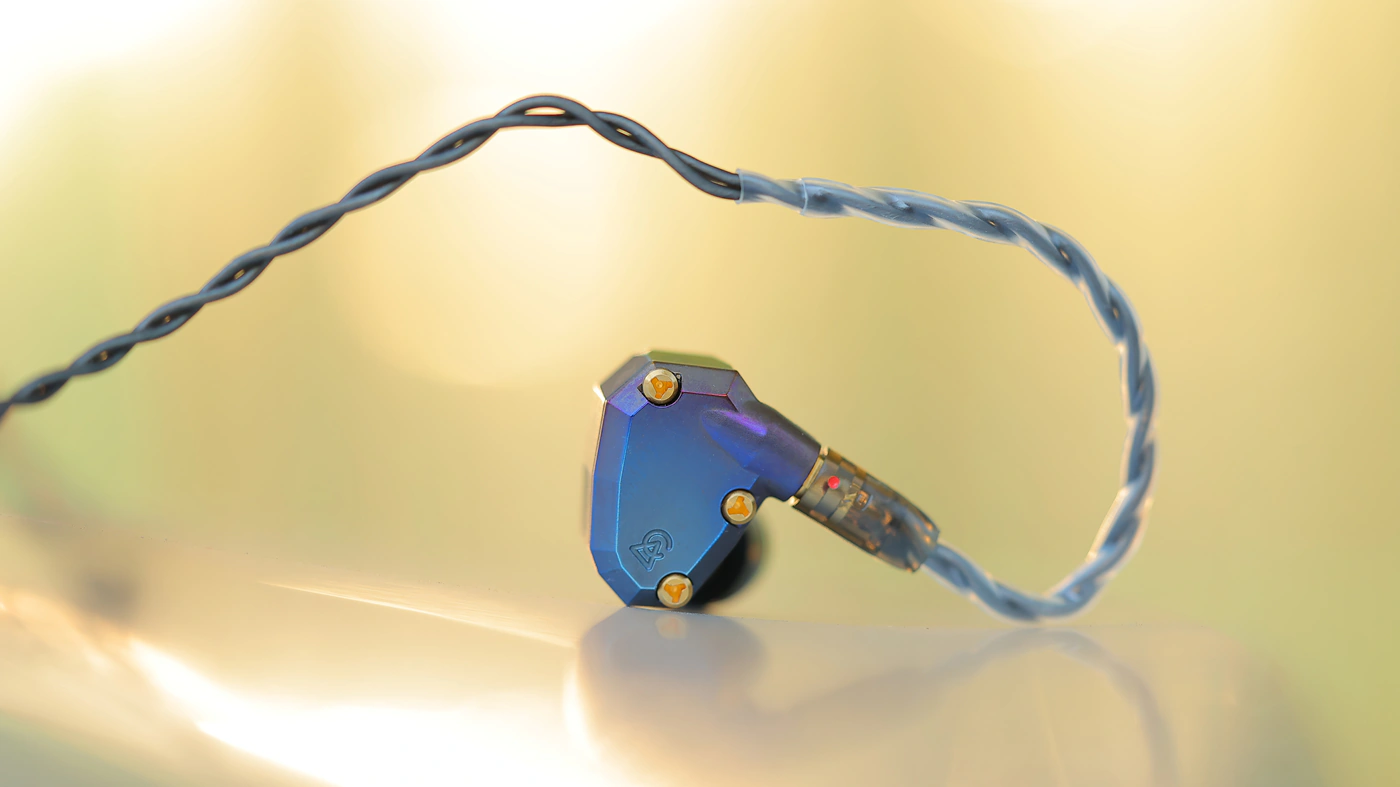
Overall Signature – The sound of the Moon Rover is a warm, detailed, sharp, mildly V-Shaped tuning, with exceptional resolution and detail revealing ability, and an excessively clean treble and upper midrange. With a bit of extra warmth in the lower mids and a beefy, strong bass, it pairs beautifully universally across my music library, one of the very few IEMS I can enjoy with both Falling In Reverse, Takanashi Kiara, Protest The Hero then Metallica and some Mori Calliope to top things off. Moon Rover is one of the most universal sounding IEMs I have ever heard, it handles every single style with ease, has a wide, well separated sound and can reveal detail really well, like Clear Tune Monitors Da Vinci X or Campfire Ara, but with a better bass impact, lower THD and higher control. It is as close to perfect as you can get around the price point, and the midrange has one of the most natural tunings in the price bracket too, which is a huge price when purchasing an IEM.

Bass – Starting with the low-end, we have a beefy, slightly warm, but large and impactful bass, it climbs down to 20 Hz, and has most of the energy in the sub bass, around 40 Hz, with a strong presence up to about 80 Hz, keeping a pleasingly strong body and energy for all music. There’s a strong tendency for the bass to be deep and powerful, present and fully revealed, fully rendered even in songs where it usually fades in the background. You can still hear the bass guitar in punk songs like Sum 41 – No Brains, while in EDM songs, bass takes the spotlight, giving music body and punch, weight and Moon Rover can make any room your personal Trance Club. Even drums are cleverly rendered and revealed, with the bigger hits taking the foreground, but smaller and quieter patterns still being clearly audible in the background.
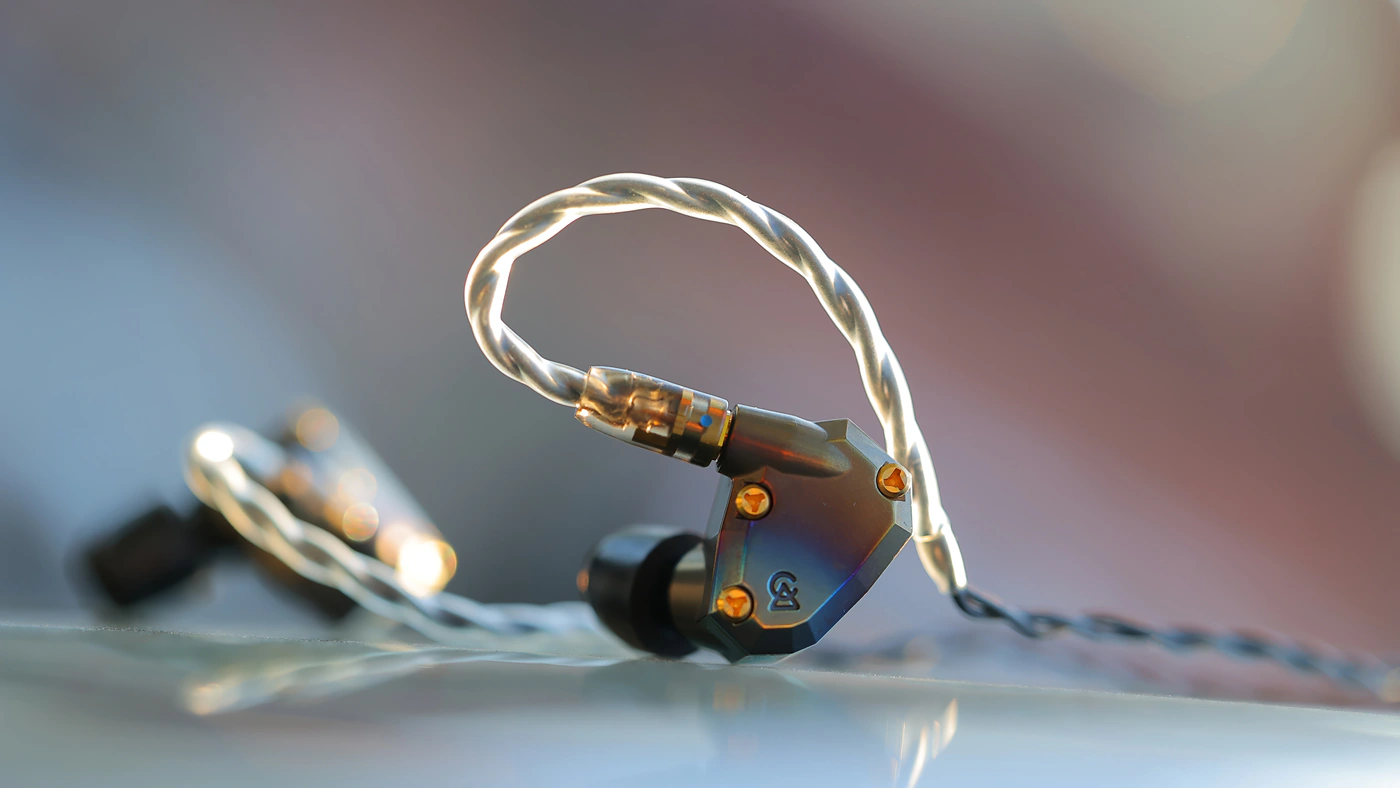
Midrange – Transparency is the one key word that defines the midrange of the Moon Rover, it handles both male and female voices equally well, giving both a strong emotion, and the right texture and weight. Male voices are deep, powerful and serious, while female voices can be both emotional, lush and fluid, or bratty and colorful in the case of J-Pop and J-Rock. Moon Rover handles micro details and reveals intonation really well. Lyrics are very easy to understand, each word is spoken clearly and Moon Rover is not a forgiving IEM because it lacks treble or upper midrange, but it sounds musical and enjoyable with all music in general, handling older albums, harsh recordings as well as smooth and lush modern songs. Separation between the voice and the instruments is strong, and you can hear multiple layers of music, a very well defined foreground, a distant background that expands far in the distance, but also an unlimited number of layers in between, each instrument having its own space and layer to play in.

Treble – With a strong, sharp and bright treble, Moon Rover reveals the sharper side of songs really well, presenting a sparkly, bright and airy top end, with a strong sparkle and shimmer. It is one of the IEMs which can stay natural and honest to the song despite having the potential to reproduce a really strong treble. I found this to be a bit of an issue with the likes of Maven Pro as it colors the sound quite a bit with its treble, but Moon Rover does not impose a specific treble tone, it allows each song to have a different cymbal crash sound and texture, different point of treble cutoff, and reveals what is present in the original song with as high transparency as possible. Treble energy is strong up to the highest treble octaves, with a slight preference for the upper treble versus the lower treble. This also means that the hot, lower treble 6 kHz – 9 kHz range is avoided well, and sound is never metallic or harsh, the strongest treble energy being audible in the 11 kHz – 14 kHz range.

Dynamics / PRaT / Textures – Moon Rover has a fairly even and cohesive texture presentation, most sound has a natural-fast speed, except for the bass, which is slightly slower, creating a longer decay and a more satisfying tailing / impact delivery. There’s a good sense of space and punch in music, with an exceptional sense of micro detail and macro detail. The sound produced is very dynamic, punchy and colorful with a good handling of both dynamically compressed songs and songs with a high dynamic range. Even with extreme dynamic compression found in EDM, Moon Rover can keep up, have no distortion and present all the details recorded.

Loudness Saturation Gradient – Moon Rover gets more dynamic, more colorful and more V-Shaped the louder you go, having a natural, smooth-lush sound at low volumes, which turns brighter and more V-Shaped, more dynamic and more punchy at louder volumes. This can result in some differences in impressions and opinions, as I listened to it almost exclusively at very loud volumes, especially thanks to its very low THD and good control up loud. At low volumes, the sound is still plenty detailed and crisp, but the smoother and warmer signature make it more relaxed and laid back compared to the more aggressive and more fun signature it has loud. Moon rover does not color my taste in either direction, I can quickly go through my entire library and switch from rock to metal to jazz to pop and to classical, it is a very good universal IEM that renders all music beautifully.
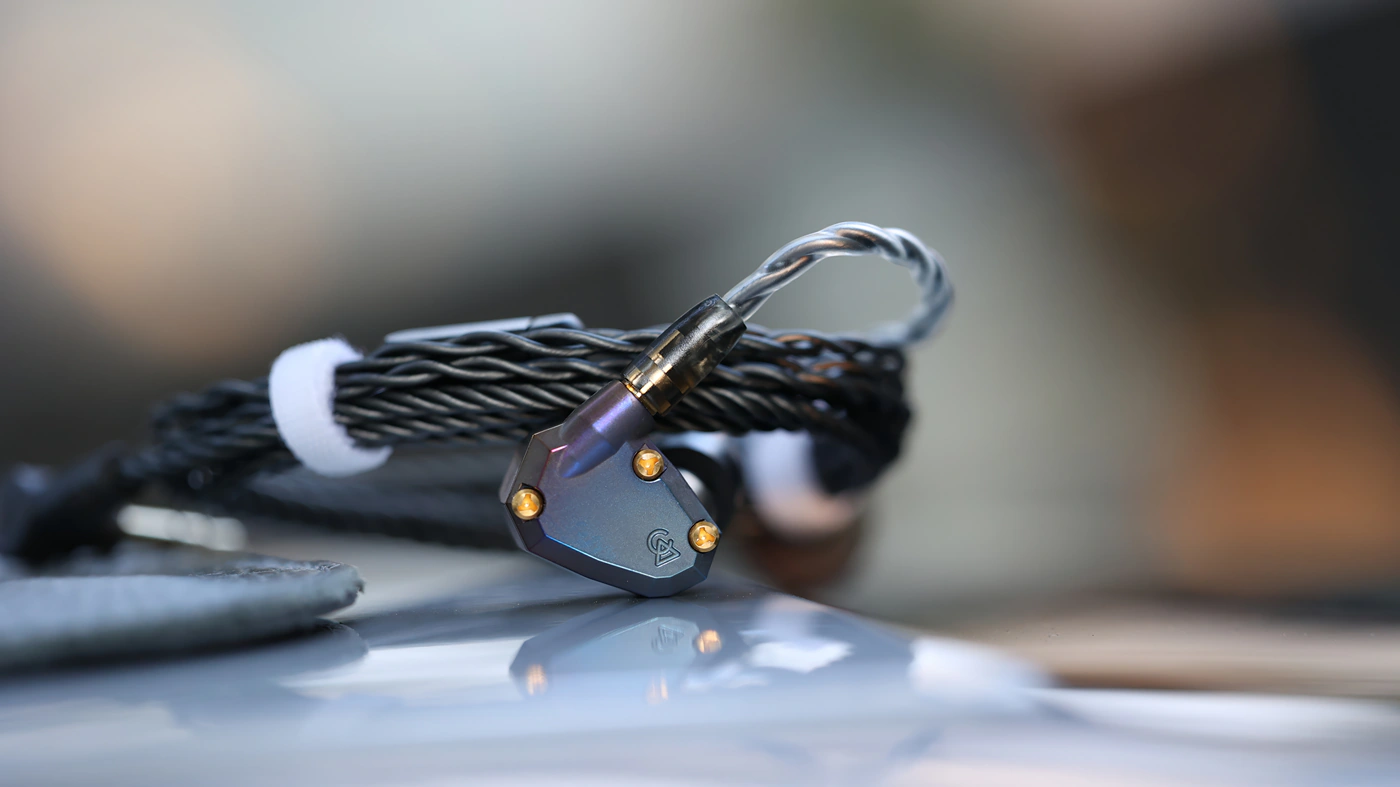
Soundstage – Moon Rover has a very good imaging and strong instrument separation, creating a wide soundstage for an IEM, and rendering spatial information really well. The dimension is equal in the lateral and depth planes, and there’s even a good sense of vertical extension, with strong imaging and the whole sound is natural in general. Moon Rover is one of the wider, more airy sounding IEMs out there.
Comparisons
Campfire Moon Rover vs Soundz Flame (1199 USD vs 1101 USD)
Build – Like most of the IEMs that Moon Rover will be compared to in today’s written Review, Soundz Flame comes with a resin body, and has a shallower fit, while Moon Rover has a titanium body and has a deeper fit inside my ears. Flame offers a much stronger passive noise isolation, and the cable is better on the Moon Rover, but the package of the Soundz Flame feels more high-end thanks to the heavy and sturdy metallic transport case with rubber coating on the inside. Both IEMs have an excellent build quality, but Flame is more sensitive to the source background noise and to the quality of the source, while Moon Rover will sound more similar across sources and is not very sensitive to the source noise. Both IEMs look super beautiful in person.
Sound – Flame is produced by a monitoring company, and it inherits some of that monitoring signature, with a much softer impact, but higher revealing ability, being more analytical and faster in the midrange, at the cost of having a more linear sound. Moon Rover has a contrasty, high-energy and highly impactful sound with much better bass extension and more energy in the bass, a beefier sound with more body, and a moire crisp treble, by all accounts being a more v-Shaped or U-Shaped sounding IEM, the extremities being more forward. Part of this more dramatic signature, Moon rover is also clearly more dynamic and creates a wider, deeper soundstage that is more impressive and puts music into perspective more, while Flame creates a more accurate and acute instrument separation, being more comparable with a high-end monitor than a traditional IEM.

Campfire Moon Rover vs Campfire Bonneville (1199 USD vs 1399 USD)
Build – We couldn’t miss comparing a Campfire to another Campfire, and Moon Rover delivers a fairly similar wearing experience when compared with the Bonneville despite a few key differences. Both IEMS have a medium-deep fitting and both have a slight tendency to create a bit of void, so both will be best inserted and taken out more slowly. This being said, Bonneville has a more rounded shape all-around and it is made of high-end resin, while Moon Rover is made of Titanium, both materials being highly bio compatible and feeling good when in contact with the skin. Bonneville is more sensitive to source noise and to the source quality, while Moon Rover is not sensitive to the source quality. Bonneville comes with a balanced cable, while Moon Rover comes with a single ended cable. This being said, the cable of the Moon rover is more flexible and more comfy to use, while the cable of the bonneville looks more modern. Bonneville offers a significantly stronger passive noise isolation.
Sound – You could argue than when writing and reading the description of the two IEMS, the seem similar, but there are a few key differences here as well. While both have roughly the same level of resolution and detail, the midrange of the Moon Rover is more forward, can create a more natural voicing for male voices, while Bonneville creates a more emotional voicing for female voices. Both IEMs have a wide soundstage, but Bonneville can sound deeper, and darker while Moon Rover sounds wider and brighter. The treble of the Moon Rover has most of the energy in the mid and upper treble, while Bonneville has more energy in the upper midrnage and lower treble, with a more relaxed upper treble. Inherently, and from my experience with fans, this means that Bonneville might be better suited for a listener who’s older, and who will hear more of the treble and sound of the Bonneville, also the beefier, warmer bass creates a more romantic signature that I found fans to prefer in this case, while someone who is younger and listens to more modern rock, metal and who hears well into the 14 kHz – 16 kHz range will likely prefer the Moon Rover. The burned titanium look of the moon rover and edgier design also help me lean more towards this conclusion.

Campfire Moon Rover vs Sennheiser IE900 (1199 USD vs 1499 USD)
Build – I was going to say that the build quality is comparable, especially as both IEMs come with MMCX connectors, but I had to send IE900 to be repaired as the left earpiece died on me, while out of all the IEMS I have reviewed from Campfire, not a single one died so far, nor has experienced any kind of failure, so Moon Rover likely has a better build quality. There’s also the cable thing, where Campfire has better default cables, while IE900 is basically not usable with the default cables which are too stiff and have a solid ear guide that is uncomfortable. Ie900 is lighter though, but isolates less from the outside noise and leaks much more. Both IEMS are comfortable while worn with aftermarket cables and aftermarket eartips. I am having a hard time driving both, but the Ie900 does not change signature at all with the source, while Moon Rover changes a bit more with the source.
Sound – Ie900 is heavily defined by the splashy sound, a more aggressively U-Shaped sound, but also by a more recessed midrange, which creates a slightly larger soundstage laterally, but Moon Rover has a more beautiful voicing, especially in the midrange, where it seems to handle bratty and sweet female voices better, creating a more musical and also more enjoyable sound in general. The sub bass is a bit stronger as presented by Ie900, but Moon Rover has a harder, more impactful bass in general, with a brighter treble that has better extension and sounds more crisp, while Ie900 sounds more splashy. At this moment, the Moon rover is a better value, especially as it is more affordable.

Campfire Moon Rover vs Spirit Torino Twin Pulse Beryllium (1199 USD vs 999 USD)
Build – Moon Rover has a deeper fit than the Twin Pulse Beryllium, but it also can be said to have a better fit. Both IEMS require aftermarket cables to get the most out of them, as Moon Rover comes with a single ended cable, and Twin Pulse Beryllium can be paired with a more ergonomic cable and eratips. Both IEMs are about as sensitive to the source sound and source quality, but Moon Rover can scale a bit more with the source. It is easier to drive Moon Rover, as Twin Pulse offers almost no passive noise isolation, while Moon Rover offers more passive isolation. Construction quality is excellent on both.
Sound – If you like a more powerful bass, and a deeper presentation, Moon Rover climbs much lower in the sub-bass and offers more impact and depth. Twin Pulse has a warmer, woolier sound with a fuzzier bass presentation that is fuller and closer to an acoustic performance, while Moon Rover renders EDM Trance Techno bass more accurately. Both IEMs have a natural midrange, but Twin Pulse has a more detailed soundstage, while Moon Rover reveals more information and detail in music, giving all music a more analytical approach. The treble of the Twin Pulse is softly rolled off, smooth and gentle, while Moon Rover has a bright, fantastic and brilliant treble with a lot of sparkle, energy and one of the strongest extensions in the price range. The bottom line is that Twin Pulse sounds more traditional, more warm and gentle, wide and analogic, while Moon Rover sounds more detailed, more crisp and has a harder impact combined with a more modern and impactful sound.

Campfire Moon Rover vs Sweear He-Live5 (1199 USD vs 899 USD)
Build – Moon Rover is made of titanium, so it is quite a bit heavier than HE-Live5 which uses high-end resin, but both IEMs have a similar level of comfort at the end of the day, although He-Live5 uses a different insertion depth, being shallow-medium instead of medium-deep like Moon Rover. Both IEMs are easy to drive, but it takes more power to make the Moon Rover go loud, and Moon Rover is not as sensitive to source noise, being one of the most silent IEMs even when paired with highly noisy sources. The cable of both is good, but HE-Live5 comes with a modular high-end cable that has balanced connectors, while Moon Rover comes with a thinner, more flexible single ended cable. The package of the Moon Rover is slightly more colorful. I also found out that Sweear comes from Sweet Ear but stylised.
Sound – Sonically, the two IEMs are similar in resolution and detail, but He-Live5 will focus a lot on the treble and the upper midrange, having a more neutral bass, and a brighter, more open sound. Moon Rover has more bass and more impact, the low-end reaches 20 Hz more audibly, it gives music more body, more depth and has a darker tuning than He-Live5. The dynamics are higher on the Moon Rover as it can present more body to each instrument, while He-Live5 will sound more delicate and sharper in the treble. For someone who likes a deeper and beefier bass, Moon Rover will deliver a much more natural sound, while He-Live 5 is great if you know you want a bright, sharp and airy sound.
Value and Conclusion
Priced at $1199 USD, Moon Rover is one of the pricier IEMS out there, but it delivers a high performance relative to the market, having a high resolution, and a natural, transparent sound that is not colored by an internal signature as much as most of the competition offers in the same price range. It isn’t just about the technical performance, but the Moon Rover feels sturdy and comfortable, is beautiful and reliable, being an excellent overall product with a bit of extra style and color, compared to most of the market.
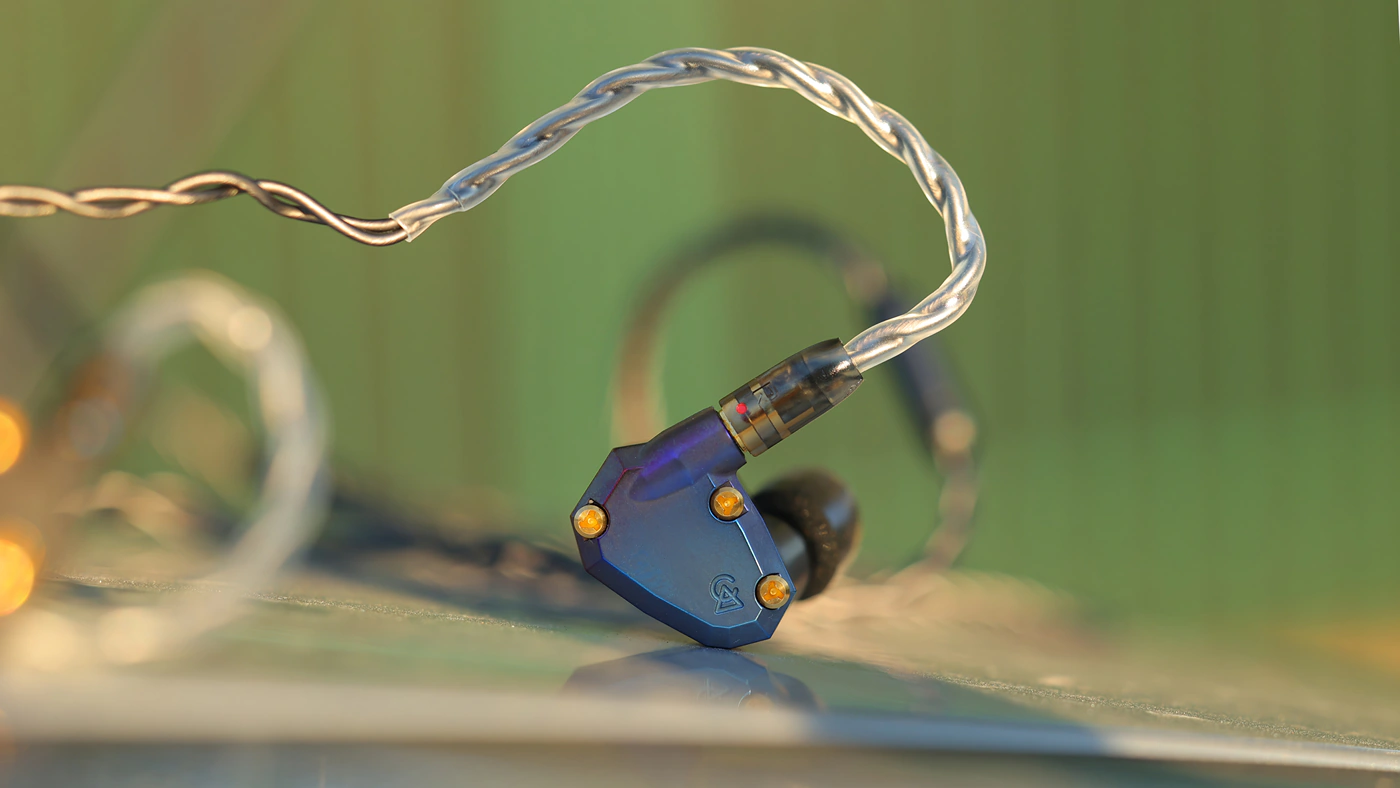
Award – Before the end of Today’s Review, I will be awarding Moon Rover the Hall Of Fame award, and it replaces older Campfire Models, especially those which are no longer in production, revealing how a company can still be relevant and offer better and better products, with very good pricing for the performance offered.
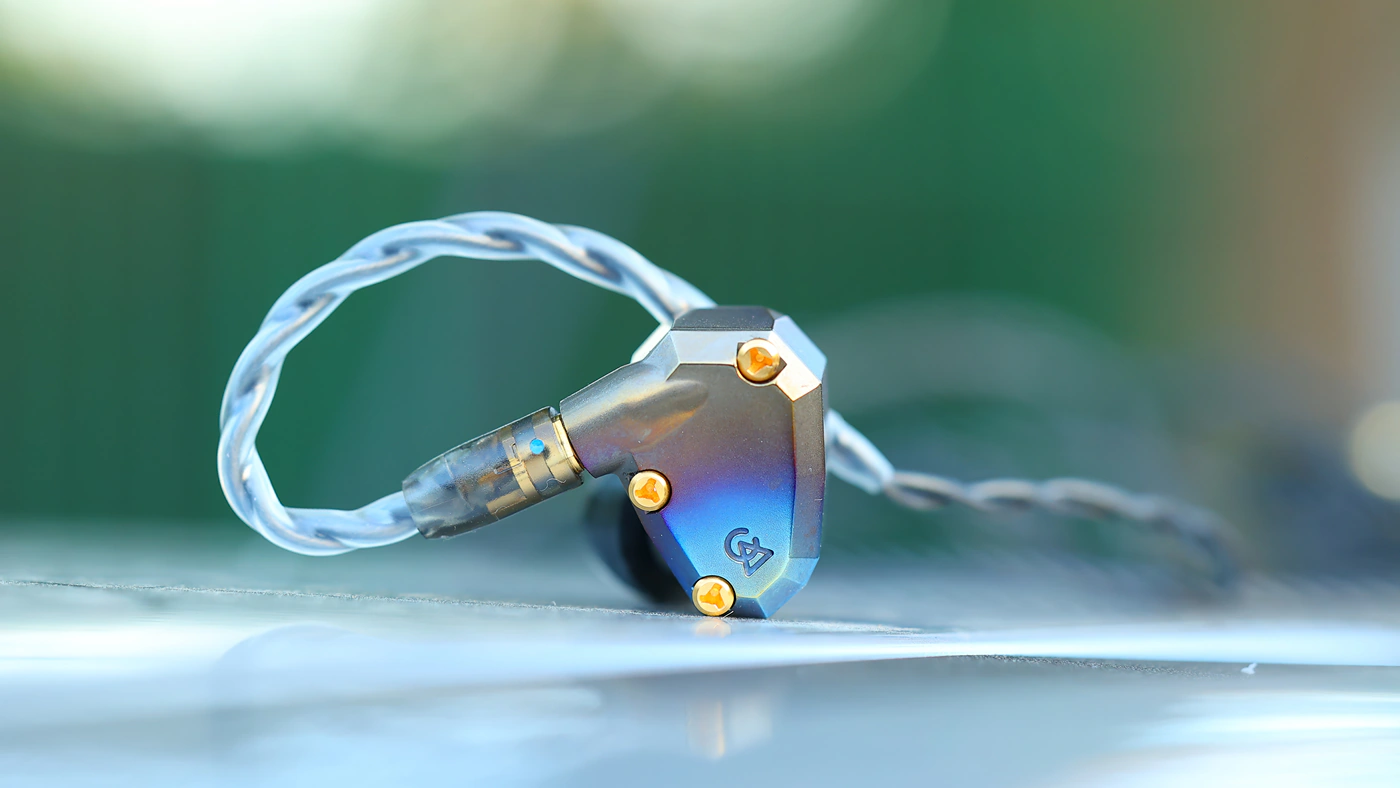
At the end of the day, if you’re looking for an excellent fitting, a revealing , detailed and natural sound with a full, deep bass, and a sharp, airy and sparkly treble, and excellent extension both ways, plus a cohesive sound that is dynamic and punchy, Campfire Moon Rover offers everything you may have dreamt of, and more, being a competitive and excellent earphone I fully recommend and use myself.
Product Link
Amazon – https://amzn.to/3YGiXuS
--- Please remember to stay safe, and always have fun while listening to music!---
- If you have a dime to spare, please donate, and help us! It would make the day brighter for me and my wife-
Full Playlist used for this review
We listened to more songs than those named in this playlist, but those are excellent for identifying a sonic signature. I recommend trying most of the songs from this playlist, especially if you’re searching for new music! The playlists are different for Spotify, Tidal and Youtube, and based on the songs I enjoy and are available on each!
https://www.youtube.com/playlist?list=PL_cjBXGmwSHSdGcwuc_bKbBDGHL4QvYBu
https://open.spotify.com/playlist/5J3oloz8Riy9LxEGenOjQ0?si=979ba4f082414be7
https://tidal.com/browse/playlist/330fd544-8e5b-4839-bd35-676b2edbb3d5
--- Contact Us ---





